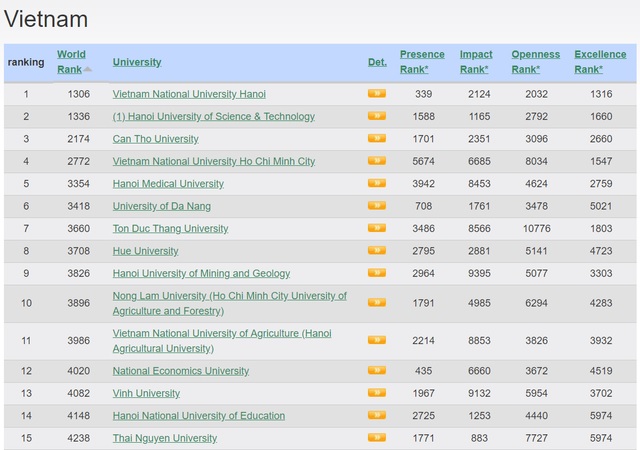In this edition, 28,070 universities and colleges in the world (including 13,087 institutions in Asia; 3,145 ones in Southeast Asia and 132 others in Vietnam) are ranked.

In the ranking, Cybermetrics Lab has minor adjustments in the weighting of rating indicators; Web Presence reduced to 5% (instead of 10% previously) and weight of excellence indicator, which evaluates the quality of scientific publications based on the Scopus database, increasing from 30% to 35%. Therefore, Webometrics’s ranking has been adjusted to increase academic assessment of higher education instructions.
| Webometrics Indicators: 1. Presence:Number of pages- size of the main webdomain of the institution. 2. Impact:Number of external networks originating backlinks to the institutions webpages.
3. Openness:Number of citations from Top authors according to the source Google ScholarCitations 4. Excellence:Number of papers published in Scopus provided by Group Scimago The Webometrics Ranking of World Universities, also known as Ranking Web of Universities, is a ranking system for the world's universities based on a composite indicator that takes into account both the volume of the Web contents (number of web pages and files) and the visibility and impact of these web publications according to the number of external in links (site citations) they received. The ranking is published by the Cybermetrics Lab, a research group of the Spanish National Research Council(CSIC) located in Madrid. The aim of the Ranking is to improve the presence of the academic and research institutions on the Web and to promote the open access publication of scientific results.The ranking started in 2004 and is updated every January and July. Today it provides Web indicators for more than 12,000 universities worldwide. |